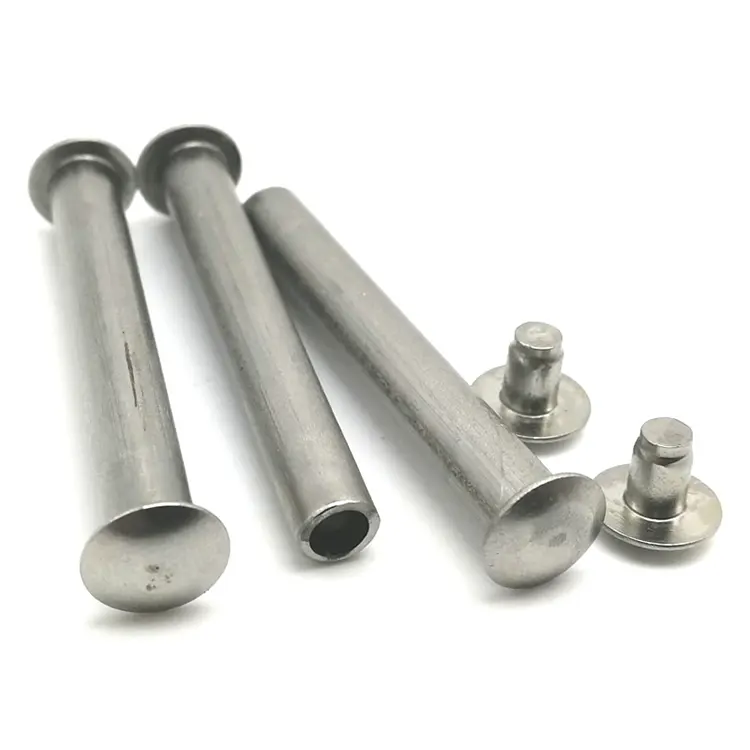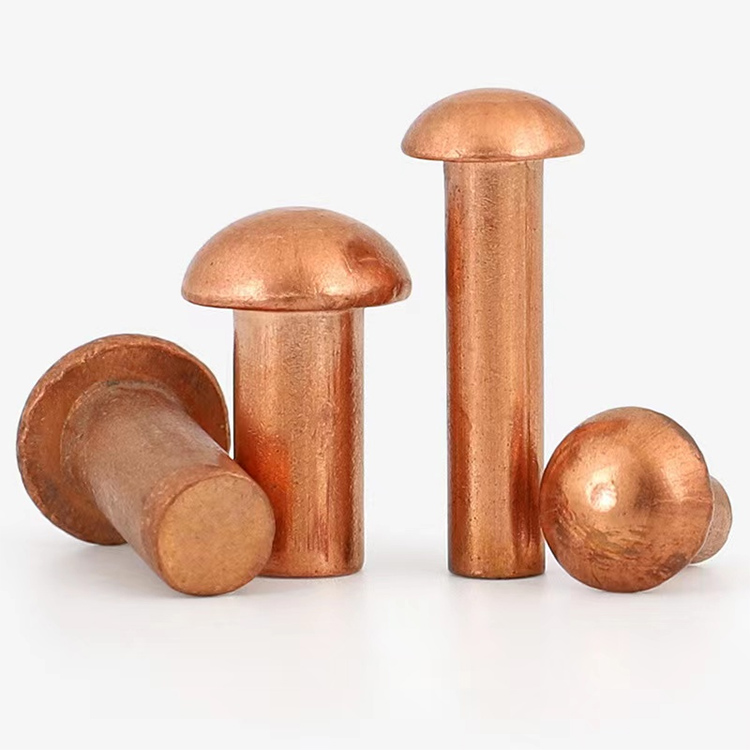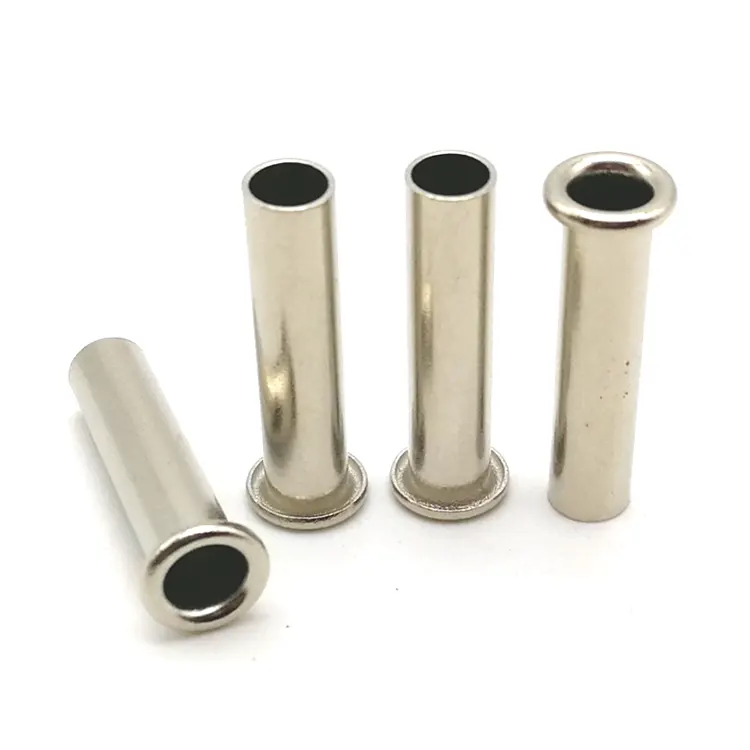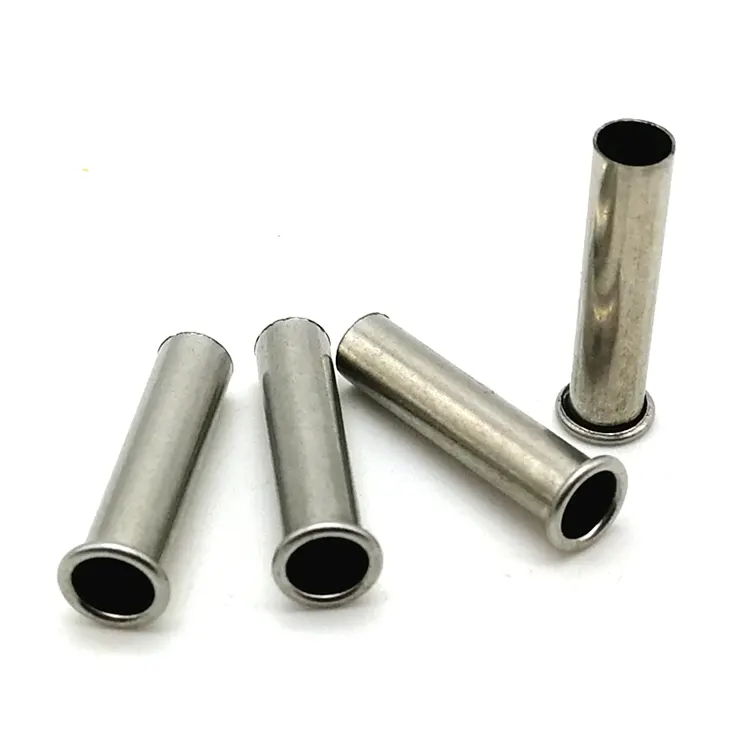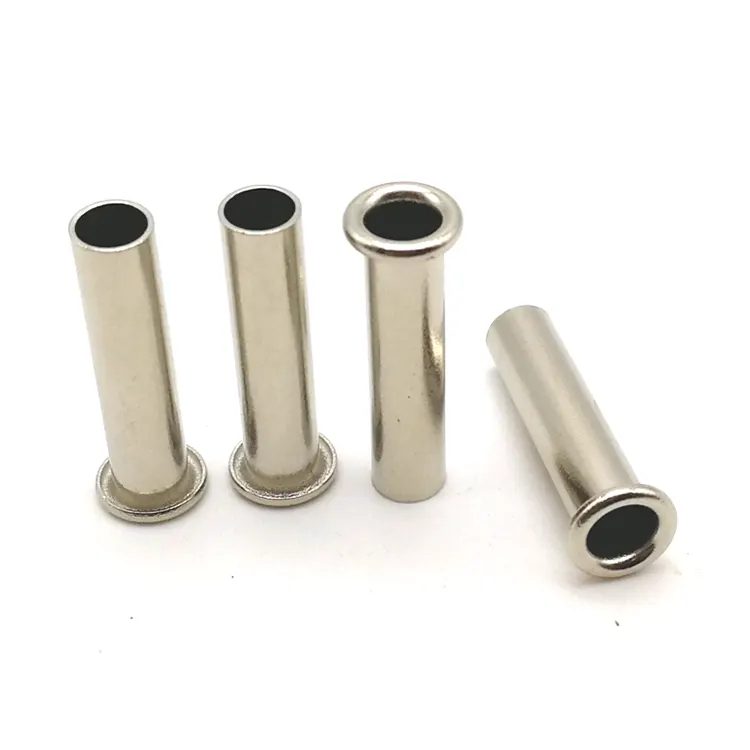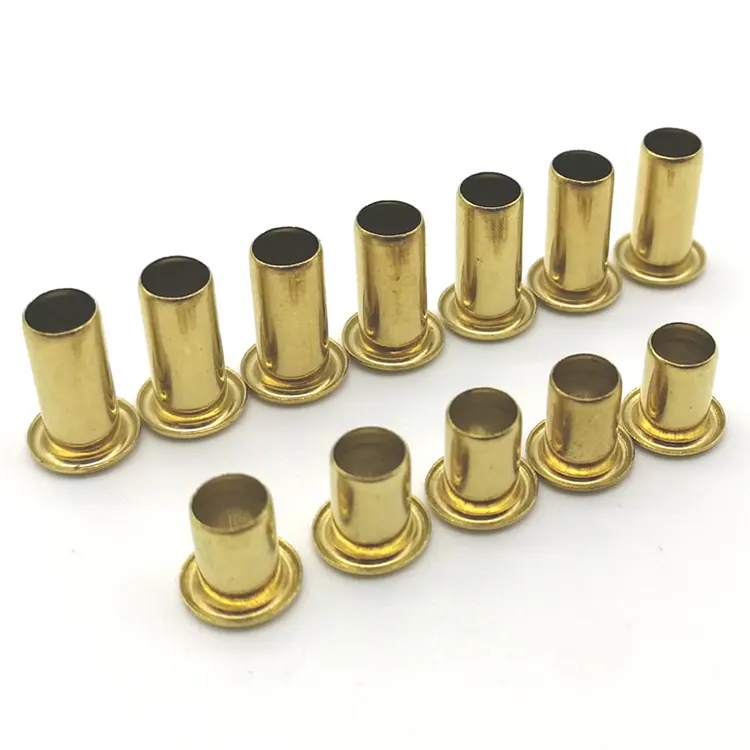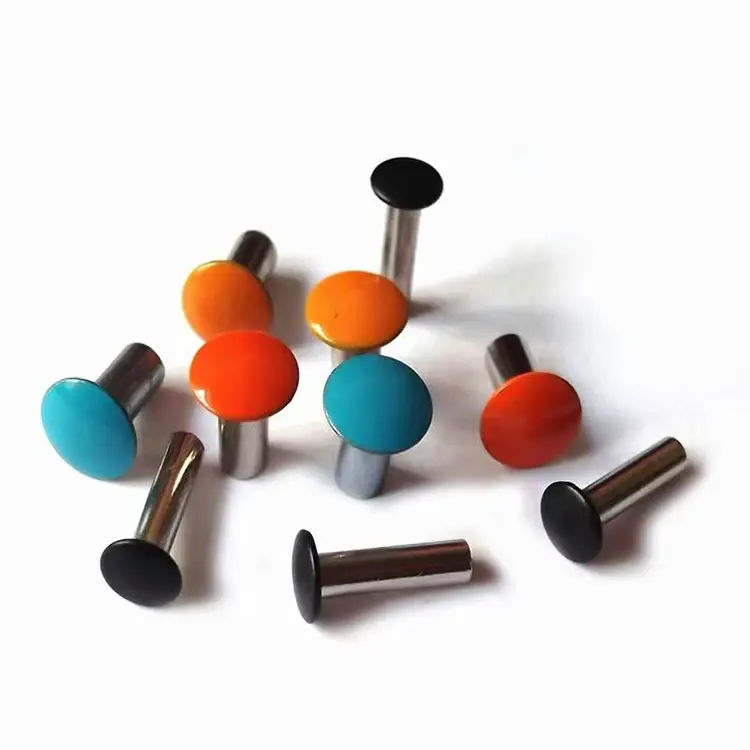Rivets
As one of professional manufacturer in China, Notin would like to provide you Rivets. And we will offer you the best after-sale service and timely delivery.
What is a rivet?
A rivet is a permanent mechanical fastener used to join two or more materials. Rivets work by inserting a metal pin into an aligned hole and deforming the end, creating a strong, secure, and durable connection. Unlike temporary fasteners like screws, rivets do not rely on threads, but instead form a permanent connection, making them ideal for applications requiring high strength, durability, and vibration resistance.
Classification of Rivets
Rivets are typically categorized by head shape, degree of hollowness, or material.
Based on head shape, rivets can be classified as flat head rivets, round head rivets, countersunk head rivets, mushroom head rivets, universal head rivets, truss head rivets, etc.

Based on degree of hollowness, rivets can be classified as solid rivets, semi-tubular rivets, or full tubular rivets.
Based on material, rivets can be classified as brass rivets, stainless steel rivets, steel rivets, aluminum rivets, copper rivets, etc.
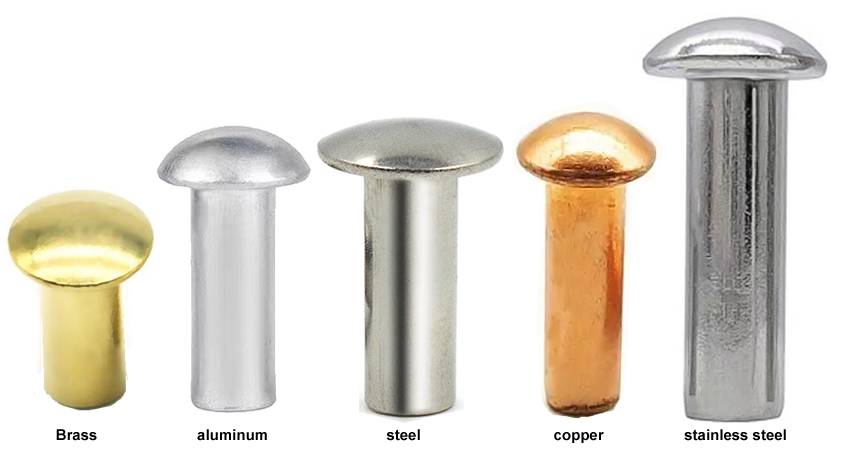
What surface finishes are available for rivets?
Rivet surfaces are typically treated with rust-proofing treatments, primarily electroplating, including zinc plating, nickel plating, chrome plating, tin plating, gold plating, and silver plating. Electroplating is a common rust-proofing method for rivets. It applies a layer of plating to the rivet surface through physical or chemical methods. The plating effectively prevents corrosion and rust, while also providing a certain aesthetic effect.
Another special surface treatment method is head coating. Head coating is performed after the rivet is electroplated. This allows for a variety of colors on the rivet head, achieving an aesthetically pleasing finish.
Aluminum rivets cannot be electroplated, but they can be anodized. Anodizing also allows for a variety of color options, but the unit price is higher than electroplating.
Rust-proofing the rivet surface is crucial, effectively extending the rivet's service life and ensuring a secure connection. Different rust-proofing methods are suitable for different environments and applications, so the choice should be tailored to the specific situation.
- View as
Rivets de tuyaux en acier
Les rivets de tuyaux en acier offrent des avantages tels que la légèreté, la haute résistance, la résistance à la corrosion, l'excellente étanche à l'air et la haute fiabilité. Ils conviennent pour rejoindre une variété de matériaux, tels que les alliages en aluminium, l'acier et les plastiques. En outre, le corps creux des rivets de tuyaux en acier réduit considérablement leur poids, contribuant à la légèreté globale de la structure.
En savoir plusenvoyer une demandeRivets de tuyaux en acier inoxydable
Les rivets de tuyaux en acier inoxydable sont constitués d'un corps et d'un capuchon, avec un canal creux entre les deux. Cette conception permet au rivet de sécuriser les matériaux en serrant ou en se développant pendant le processus d'adhésion. L'acier inoxydable a été choisi principalement pour sa résistance à la corrosion. Le chrome en acier inoxydable forme un film d'oxyde à la surface, empêchant la rouille et prolongeant la durée de vie du rivet. L'acier inoxydable offre également une excellente ténacité et une résistance, ce qui le rend adapté à une large gamme de conditions environnementales. Les métaux nuages sont un fabricant de rivets de tuyaux en acier inoxydable en Chine pendant plus de 10 ans.
En savoir plusenvoyer une demandeRivets de pipe
Les rivets de tuyaux sont généralement utilisés dans les applications où la fixation est requise, mais la résistance extrême ne l'est pas. Par exemple, dans les dispositifs électroniques, ils peuvent être utilisés pour connecter les circuits imprimés ou les composants de logement. Dans la fabrication de meubles, ils peuvent être utilisés pour fixer les structures en métal ou en bois. Certains articles décoratifs ou petits dispositifs mécaniques utilisent également ces rivets.
En savoir plusenvoyer une demandeRivets à gorges
Les rivets à gorges sont un rivet polyvalent couramment utilisé pour connecter des plaques d'aluminium mince en aluminium et en acier. Ils se caractérisent par de beaux points rivetants, une structure forte et une hauteur réglable. Ils conviennent à la connexion de diverses plaques métalliques et de matériaux différents. Les rivets des œillets peuvent être polis à chaud pour former une couche protectrice à la surface, qui possède des propriétés antistatiques, résistantes à la corrosion et anti-allergiques.
En savoir plusenvoyer une demandeRivets de tuyaux en laiton
Les rivets de tuyaux en laiton sont une attache mécanique courante utilisée dans un large éventail d'industries. Ils sont cylindriques creux et présentent généralement des bords à chaque extrémité. Les rivets de tuyaux en laiton obtiennent une connexion par déformation et offrent une excellente conductivité électrique, une résistance à la corrosion et une facilité d'installation.
En savoir plusenvoyer une demandeRivets colorés peints
Les rivets colorés peints sont des rivets avec la tête peintes, elles pourraient être peintes avec différentes couleurs, comme le rouge, le vert, le noir ou ce que vous voulez. Nuote Metals propose des rivets peints en différentes tailles, bienvenue pour nous envoyer votre demande.
En savoir plusenvoyer une demandeWhat are the advantages of rivets over other fasteners?
1. Ease of Installation
Rivets are fast to install, and even fully automated for high-volume applications, resulting in a simple and efficient operation process.
2. Connection Reliability
The riveting process is standardized, with strict quality control, resulting in highly stable connections. Visual inspection allows for quick verification of connection quality.
3. Vibration and Impact Resistance
Rivets connect through deformation or interference fit, providing strong clamping force and excellent vibration resistance, capable of withstanding vibration and shock.
4. Low Cost
Rivets are easy to install and can be fully automated, saving significant labor costs.
What are the advantages and disadvantages of rivets made of different materials?
Aluminum Rivets
Advantages: Lightweight, reduces overall product weight, low cost, suitable for general civilian applications.
Disadvantages: Low tensile and shear strength, unsuitable for high-strength workpieces, prone to electrochemical corrosion when in contact with metals such as stainless steel.
Stainless Steel Rivets
Advantages: Strong corrosion resistance, high hardness, suitable for high-strength workpieces (such as marine equipment)
Disadvantages: Higher cost, typically more expensive than aluminum rivets of the same specification.
Brass and Copper Rivets
Advantages: Excellent conductivity (such as connecting electronic components), good corrosion resistance.
Disadvantages: Higher cost, more difficult to process.
Steel Rivets
Advantages: High hardness, high connection reliability, and wide applicability.
Disadvantages: Compared to other materials, iron rivets are more prone to rusting.
What are the main applications of rivets?
Rivets have a wide range of uses, from small items like a pair of scissors to large items like airplanes and ships, as well as in high-precision medical applications.
Industrial Manufacturing
Rivets are used in a wide variety of industrial fields, wherever there is a need to connect two or more materials.
Electronics
Rivets secure heat sinks and chips, providing both vibration damping and noise reduction, and are widely used in the cooling systems of electronic products such as computers and mobile phones.
Automotive
Rivets are widely used to connect components of automobile bodies and chassis, such as doors and hoods. Their lightweight and corrosion-resistant properties make them an indispensable joining method in automotive manufacturing.
Aerospace
In aircraft manufacturing, rivets are used to connect different fuselage components, such as wings and tailplanes. Millions of rivets create high-strength, corrosion-resistant joints. Aluminum and titanium alloy rivets are often used to connect components of corresponding materials, ensuring stability in extreme environments.
Rivets are used everywhere. The above examples only represent a small number of their applications. We see rivets everywhere in our daily lives, such as on scissors, folding beds, and strollers etc. Rivets can be customized to different sizes and materials depending on the application.
Nuote Metals has specialized in the rivet industry for over a decade. Our factory is located in Dongguan, a city known as the "World Factory," a city with a developed industry and convenient transportation. This allows us to respond quickly when acquiring raw materials and supporting surface treatments, meeting our customers' needs for quick access to samples and bulk orders. We produce 10 million rivets daily and have molds of various specifications, allowing us to produce rivets as small as 0.8mm and as large as 10mm. We welcome your inquiries and visits.

